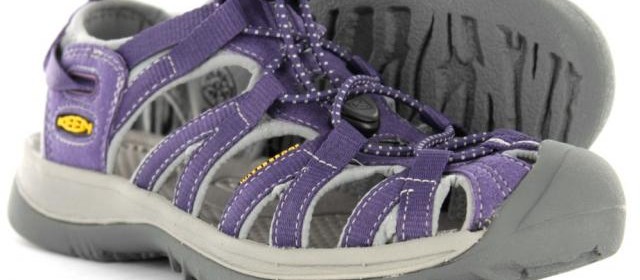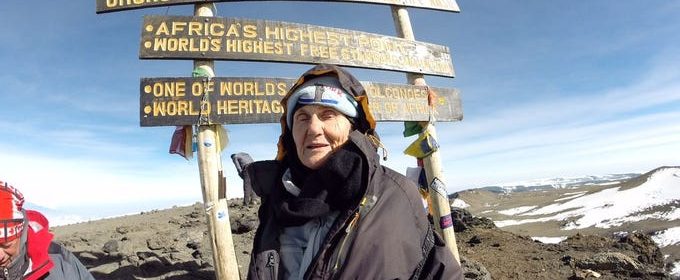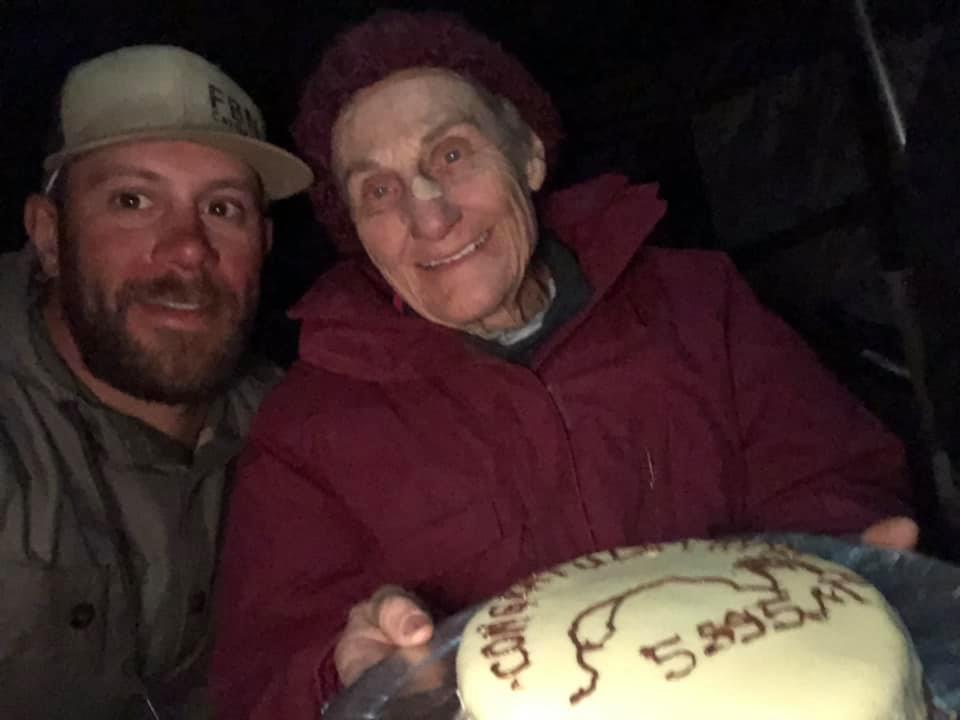Halloween in Utah: The Ultimate List of Haunted Houses and Other Spooky Attractions

There’s no question that Halloween in Utah rocks and 2019 is no different. Maybe it’s because there’s not a lot of drinking going on in the Beehive State that locals love to get their fright on. But take a look at all of the fun Halloween things to do with a date, family, or even alone, if you dare, this October.
Here is your guide to the spookiest Halloween attractions in Utah. Want to know where to go this Halloween? Just read on.
Haunted Houses for Halloween in Utah
10th West Scare House: Logan’s haunted house prides itself on “tasteful scaring” – meaning more fun, less gore. There are two haunted attractions -the Spooky Warehouse with more than 4000 square feet of haunting space indoors and the Haunt Yard – which encompasses two acres of outdoor creepiness.
Asylum 49: This 38,000 square-foot ‘insane asylum’ in Tooele is not for the faint of heart. The crazies may touch, grab and separate you from your group. They might even detain you in small dark areas, or strap you to a metal bed while they work on you. If that insanity doesn’t break you, there’s the Extreme Haunt and Ghost Hunt.
Frightmares at Lagoon: Frightmares haunts this Farmington amusement park when it quits in the fall. It’s your one-stop-shop for Halloween in Utah. Not only are there haunted houses and fun houses but there are enough family friendly activities to keep everyone excited. Plan to stay until close if you want to hit all nine haunted attractions and warehouses like the Fun House of Fear, the House of Illusions, and the Malevolent Mansion. Halloween-themed entertainment, the Nightmare Midway and many of their summertime rides and games will be open every weekend through Oct. 30.
Fear Factory: This haunted house located in the Portland Cement Works Building in downtown SLC has been named one of the scariest in the world by media outlets like USA today and Buzzfeed. The massive attraction takes up six buildings, up to six stories high, with underground passages and more than 100 actors to bring out your worst nightmares. They also have a 300 foot zipline, 60-foot tower jump and a gyroscope ride. But the absolute coolest thing you will ever do this Halloween is their new VR video game where you walk through a seven-story factory battling zombies.
Nightmare on 13th: Utah’s largest and most technical haunted house has been scaring folks for nearly 30 years. Each year, the attractions get bigger and better with multiple themed rooms and professional actors. From the classic scary clowns to the Viking underworld, this is as professional as you get. For Halloween 2019, pay a little extra and step into the Nightmare Escape rooms next door.
Dead City Haunted House: This 30,000 square foot event in Murray has over 50 rooms of terror including the Haunted Mansion, Cannibal Kitchen, Werewolf Forest, Spider Kingdom, and Vampires Lair. Dead City also has Utah’s largest, immersive 3-D attraction. For kids needing a slightly less intense Fright Level, a “Death be Gone” glow-stick can be purchased that signals the actors to keep their distance. There is also an “Animatronics Only” kids’ event with no actors to spook the timid.
Castle of Chaos: You choose your Fright Level as you experience the underground labyrinth of classic and modern-day horror in Midvale. Also, explore the three escape rooms where players are given a set time limit to unveil the secret which is hidden within the room.
Insanity Point: Thanksgiving Point is also known as Insanity Point during the Halloween season. Aside the infamous Cornbelly’s Corn Maze are the four Insanity Point haunts; the The Big Top Terror, Curtain of Chaos, The Barn and Hayloft Horror.
Strangling Bros. Haunted Circus: After you wind your way through the one of a kind, crazy, twisted, demonic halls of the Strangling Brothers Haunted Circus, you can see if you are brave enough for more. Enter the Tunnel of Foam, or find out if you can escape from Eskaped in American Fork’s renowned Halloween attraction.
Fiesta Fright: If you’re looking for something south of the Wasatch, the Fiesta Fun Center in St. George, Utah adds a Family Fear Center and exclusive escape room for Halloween.
Red Rock Haunt: For those lucky enough to have experienced Rocky Point Haunted house in SLC back before it closed in 2007, you know its level of creative horror surpassed all others. Well, not to fear, its spirit is not completely dead and gone. One of the original producers and FX engineers of Rocky Point has opened up an 8,000 sq. ft. tent of life-like horror in St. George. The circus of horror with towering castle walls and dark dungeons uses actors and special effects to bring the terror alive.
Haunted Outdoors For Utah Halloween:
So the closed in, dark spaces are not your thing or maybe they are just too predictable for you? The only thing scarier than a haunted house is a haunted wood. Outdoor haunts abound for Halloween in Utah. The activities range from haunted corn mazes to haunted forests, there is even a haunted river cruise. We mentioned a few above but here are more:
AWHC’s Haunted Hollow: The living history museum at the American West Heritage Center in Utah’s Cache Valley shares Wild West stories ranging from train robberies to double-crosses. According to its curators, the Haunted Hollow is legit haunted as the spirits of the deceased have much unfinished business with the living. Additional Family Friendly Activities at this location include the Corn Maze on the Farm as well as the Fall Harvest Festival on October 18th & 19th.
Haunted Hollow, West Haven: According to its creators, this dark and murky forest near Ogden encompasses 13 acres of the most menacing, horrifying and ghastly haunted forest in Utah.
The Corn Maize: This West Haven farm is ideal for those looking for family friendly activities in Weber County with additional activities for the older siblings. Youngsters will love the Corn Maize with it’s Pumpkin Patch, Hay Slides, Barrel Train, Zip Ride and Light Show. Meanwhile, the fearless in the family can fight off the Zombie Apocalypse with Nexus Tactical Laser Tag in the adjacent Haunted Corn Maze.
Nightmare Acres: Located at Black Island Farms in Syracuse, this is another Halloween attraction that is also filled with family friendly activities like a Pumpkin Patch, Corn Maze and Courtyard attractions.
Haunted Kay’s Cross: This one of a kind Haunted Forest in Kaysville has over 3/4 mile of sloping real forest trail and all the paranoias that come with it. The show Ghost Adventures even featured the legend of Kay’s Cross and its remains in this forest.
Night Stalkers Haunted Trail: Utah’s #1 haunted attraction 2017 & 2018 is waiting for you, adjacent to West Jordan’s popular Crazy Corn Maze. Night Stalkers Haunted Trail is touted as one of Utah’s longest and most unique haunted trails. Although they do have family friendly activities like the Halloween playground, pumpkin patch and Mayble’s 3D Funhouse, you may want to keep the little ones out of the Creatures of the Corn, Phobia, 3D Slumber and Horror Show (beware clowns).
Haunted Forest: Real trails lead you through hundreds of trees, actual swamps, mine shafts, and chilling dungeons filled with demons and ghouls. The Haunted Forest in American Fork is an outdoor adventure full of fun thrills and scares.
Glen Ray’s Corn Maze– This American Fork corn maze is another attraction that’s family friendly during the day but haunted at night. Go ahead and play in a pumpkin patch, on giant slides and in corn pits. But Friday and Saturday nights, only those who are brave enough should venture into the Field of Fright.
Water Hollow Ranch: This Uinta Basin ranch in Bluebell has a Pumpkin Patch, Corn Maze,Witch Hollow and Creep Farm. There are plenty of family friendly activities here. However, as darkness falls the haunting begins and a trip through the corn maze definitely becomes a Fright at Night.
Staheli Family Farm: This Southern Utah farm in Washington, UT near St. George, offers family friendly activities: a Pumpkin Patch, Corn Maze, Spooky Trick-or-Treat Trail as well as a Witches Night Out with the farm’s resident witches. For those who want to up the Fright Factor there is also a Field of Screams as well as a Zombie Rampage adventure.
Corn Mazes and Pumpkin Patches for Family Fun
The following farms have more Family Friendly Activities for Halloween in Utah, with haunts geared towards the littlest family members. These attractions encompass the “Spirit” of Halloween without, perhaps, the gore, guts, demons and spooky haunts of future nightmares.
Corn Maze on the Farm: Mon-Sat at the America West Heritage Center in Wellsville, you’ll find a 7 Acre Corn Maze, Holstein Bounce House, Straw Mountain, Straw Obstacle Course, GIANT slide, Tomahawk Throwing, BB Gun Range, Pony and Train Rides and the nearby Haunted Hollow.
Little Bear Bottoms Haunts: In addition to their milder haunts along the Haunted River Trail and Spooky Barn Ride, this Northern Utah farm in the Cache Valley has several family friendly activities for the littlest members of the family. These include a Pumpkin Patch, Corn Maze, Giant Hay Fort and the Not-So-Scary Haunted River Trail.
Gibson Green Acres: This farm in Ogden has a bit of something for the whole family including a Haunted Maze and many family friendly activities. During the day your kiddos will love the corn maze, giant slide, bounce house, petting zoo, and pumpkin picking. You may also opt to take a Haunted Wagon Ride to the Haunted Maze.
Cross E Ranch Fall Festival: This Salt Lake City farm has a 14 Acre Corn Maze with three routes- easy, mid and difficult–Pig Races, Zip lines, Kiddie Land, Mega Slides, Hay Rides, Corn Pit, Mini Train Rides, Mini Straw Maze, Hay Pyramid, Fire Pit, Movies on the Barn, Western Dancing and Live Music through Nov. 2.
Crazy Corn Maze: Take the whole family out to West Jordan for the corn maze, Halloween playground, pumpkin patch and fun house. This year’s all new Fright Lights is a magical lit up pathway with music. Your ticket includes a pumpkin. Mayble’s 3D Funhouse is a junior haunted house, and then of course the Night Stalker’s Haunted Trail is there if you dare. Utah’s voted #1 Haunted attraction 2017 & 2018 is waiting for you.
Petersen Family Farm: – Head out to this pumpkin patch in Riverton to harvest your own Jack o’ lantern, take a tractor hay ride, walk the corn maze, and pet the farm animals.
Cornbelly’s: The infamous fall playground will celebrate the “World of Wizards” and Harry Potter for Halloween 2019. A wizard-themed maze features eight acres of pathways where you’ll encounter interactive games and special wizard-themed trivia. There are also 50-plus other attractions that are more family friendly like a Light Up the Night Halloween Parade, Jack-o-Lantern train rides, a Trick-or-Treat Parade, fireworks and scary tales and s’mores. For those with an itch to scream, tiptoe over to the four Insanity Point haunts: The Big Top Terror, Curtain of Chaos, The Barn and Hayloft Horror.
Hee Haw Farms: This Farm in Pleasant Grove is open through Nov.2 for pumpkin picking, haunted hayrides, petting farm, corn maze, silo slide, corn cannon, zip line and more.
Other Family Friendly Attractions for Halloween in Utah
While Frightmares at Lagoon is the most noteworthy, many of Utah’s year-round and seasonal venues have something extra to offer for the Halloween season.
Carnivore Carnival: Ogden’s George S. Eccles Dinosaur Park will be covered in Halloween décor offering little witches and goblins a unique trick or treating experience. The entire park is covered with nearly 1,000 strands of light to illuminate the wide offering of family friendly activities. Carnivore Carnival is open October 17, 18, 19, and 25, 26 for carnival games, candy prizes and a dinosaur-based scavenger hunt, treating, and costume parade.
Scary Hills: Have unlimited “Scarrrry Fun” at Cherry Hills in Kaysville with Scary Hill’s Mini Golf, Haunted Bone Yard, Junior Jungle Boats, Spooky Maze, Bounce Houses, Hampster Haven, Spider Areoball, The ROCK, and Battlestar Blasters. Although geared towards a younger crowd, they do call the attractions Haunted and Spooky where skeletons, spiders and the blind corners of a maze may raise more than a few hairs.
Pumpkin Nights: Head out to the Utah State Fairpark for the magic of old Jack through Nov.2. A half-mile walking path will take you through the Forbidden Pumpkin City, a pirate’s cove, and more fantastical lands built using over 3,000 hand-carved real and artificial pumpkins. There’s also an interactive quest, brand new photo ops, and a new movie screening.
Grimm Ghost Tours: Visit actual haunted locations around Salt Lake and learn their history. Each tour lasts an hour and a half and is an interactive tour where you get off at most locations. If you want to take your experience to the next level there is a paranormal investigation. If you take the Monday tour, you’ll visit the Fear Factory!
Little Haunts: Daytime at This is the Place, Heritage Park, is a perfect intro to Halloween for the wee ones. Spooks can come with or without a costume for this fun-filled day of trick-or-treating, storytelling with a witch and other activities.
Wheeler Historic Farm Pumpkin Days – The Murray attraction has Pumpkin Days this October where guests can explore the daily Pumpkin Play Zone, Hay Maze, Cow Train & Wagon Rides.
Halloween River Cruise: Take an adventure riverboat ride on the lower Provo River where there are over 100 pumpkins reflecting off the water. Lasting 20-25 minutes, each Halloween Cruise features lights, a scary story told by the ship’s captain and a visit from a pirate who hands out candy. The cruises are presented by CLAS Ropes Course
Halloween Lift Rides & ZipTour at Sundance Mountain Resort: Just like the Full Moon Lift ride, but a little spookier! Geared to be family friendly, the Halloween Lift Rides last 45 minutes to an hour and take place on Ray’s Lift. Fun games, hot chocolate, & snacks are for sale, as well as blankets for those who forget. Weather permitting, a complimentary Halloween movie plays at the base. Ticket(s) are available for purchase online or in person at Ray’s Base Ticket Office. The ZipTour features a flight down Outlaw Span, 3,871 feet of soaring!
Sleepy Hollow Haunted Wagon Ride: Listen to your guide narrate Washington Irving’s “The Legend of Sleepy Hollow” aboard an authentic horse drawn wagon ride through the woods near Soldier Hollow in Midway. Beware as it is rumored these woods are haunted by the apparition of the Headless Horseman. This family friendly Halloween adventure does gets spookier as evening falls on the woods.
Heber Valley Pumpkin Train: All aboard the annual Halloween steamer for a 40-minute round trip. On board, your kiddos will be entertained by costumed characters and pumpkin cookies. At the depot, the kids can walk through the haunted train car as well as select a pumpkin from the Pumpkin Patch to take home.
Single Day Events For Halloween in Utah
Boo at the Zoo: On Oct. 26, kids 12 and younger can come in costume to trick-or-treat at various booths set up throughout zoo grounds.
Halloween! on Historic Main Street: Park City’s Main Street shuts down for traffic at 2 p.m. Oct. 31 so all the little ghoul’s can come out to trick or treat. All of the stores and restaurants participate and it’s a regular parade of the best costumes in the land. The event culminates at 5 p.m. with a giant Howl-o-Ween march of doggies in costume.
FearCon and the Vampire Circus– One weekend only, Oct. 10-12 experience all things scary and spooky at the Riverbend Event Center in SLC. Your premium ticket to the Vampire Circus of Terror show (sold out the past 2 years) includes a 2 Day Pass To Fear Con and all the included entertainment. Fear Con includes a wide array of interactive haunted experiences, where you can challenge your survival skills and instincts to escape terrifying creatures, clowns and zombies. Also check the entertainment schedule so that you don’t miss out on the wide variety of special shows including; magicians, fire swallowers, freaks and horror related Special FX artists. You will also have the opportunity to visit 100’s of Exhibitors and meet guest speakers from some of your favorite horror hits.











